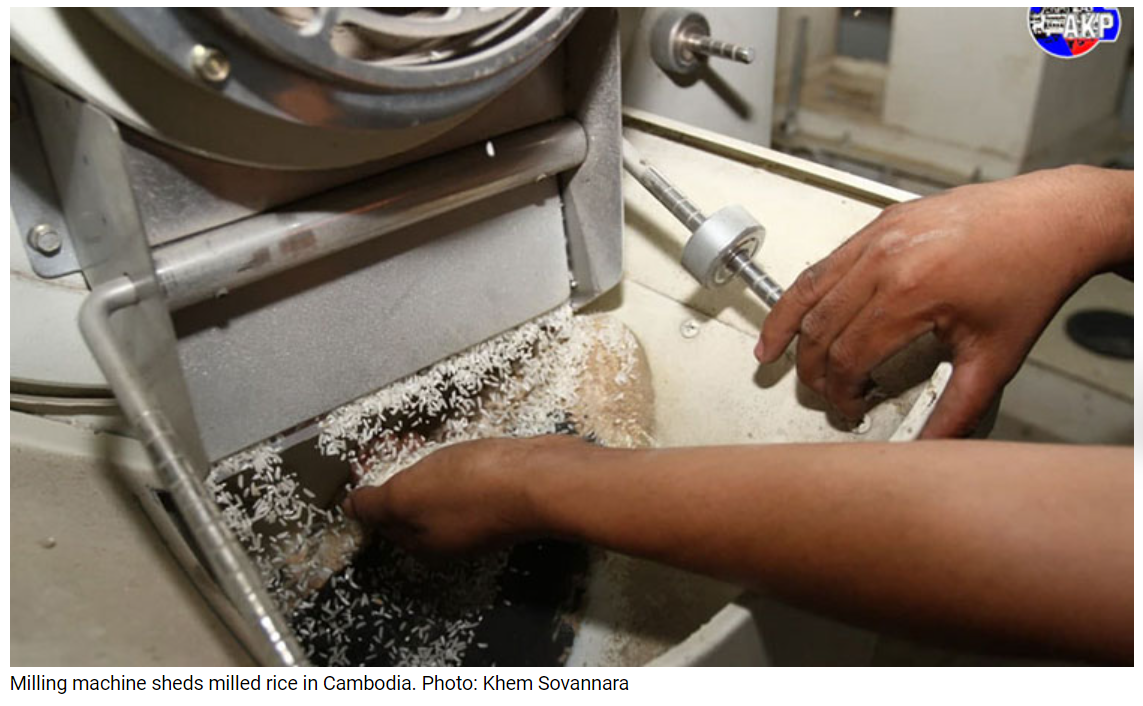OECD-FAO Outlook sees big rice exporters losing market share to Cambodia and Myanmar
Cambodian rice exporters are likely to benefit as the market share of top exporters India, Thailand, Viet Nam, Pakistan and the United States declines over the next 10 years.
The projection appears in the annual agricultural outlook by the Organisation for Economic Cooperation and Development (OECD) — a club of rich countries — and the Food and Agriculture Organisation of the United Nations (FAO).
Released in Paris and Rome on Monday, the 10-year outlook projected world trade in cereals — including wheat, maize and rice — to rise by 21 percent to 542 million tonnes by 2030.
“India, Viet Nam and Thailand will continue to lead global rice trade, but Cambodia and Myanmar are expected to play an increasingly important role in global rice exports,” it said.
Over the past 10 years, the outlook said, international rice trade grew at an average rate of 1.5 percent a year.
Growth in rice trade is expected to accelerate to about 2.6 percent a year over the coming decade with exports rising by 16 million tonnes to 62 million tonnes by 2030.
“The export share of the top five major rice exporters – India, Thailand, Viet Nam, Pakistan, and the United States – is expected to fall from 74 percent to 70 percent,” the outlook said.
Changes in varieties and increased focus on cultivating higher quality strains “will certainly help Viet Nam to reduce its dependence on China,” it added.
At the same time, “Thailand is projected to continue playing an important export role, but is expected to face more competition.”
“The group of the five largest exporters will lose market shares to countries in the less developed countries (LDC) in Asia, particularly Cambodia and Myanmar, as these countries become more competitive internationally.”
The outlook expects rice shipments from less developed Asian countries to more than double from 4 million tonnes to 10 million tonnes by 2030.
“Large exportable supplies will allow these countries to capture a greater share of Asian and African markets.”
The outlook noted that the Indica rice variety historically accounted for most rice traded internationally.
“However, demand for other varieties is expected to continue to grow over the next ten years,” it said.
The other major type of rice traded internationally is the Japonica variety.
“Despite their different market structures in terms of production zones, consumer preferences and policies, most agricultural models do not distinguish between the two varieties,” the outlook said.
In the medium and long term, however, climate change is expected to affect production of both varieties.
Projections using a new Rice Economy Climate Change model showed that international Japonica rice prices would be “more volatile” than those for Indica rice.
Modeling also looked at the impact of agricultural investments on Indica and Japonica rice markets, including price stability, based on six scenarios for climate change over the mid to long-term.
Under two scenarios, modeling found that knowledge and innovation systems in Viet Nam and China “will play a significant role in stabilising international Indica and Japonica rice prices … in the mid-to long-term, as rice production is increasingly affected by climate change.”
The model included Indica and Japonica markets in Thailand, Viet Nam, Indonesia, Malaysia, the Philippines, Cambodia, Laos, Myanmar, China, Japan, Korea, India, United States, the European Union (including the United Kingdom), Bangladesh, Sri Lanka, Nepal, Pakistan, Brazil, Côte d’Ivoire, Egypt, Madagascar and Nigeria. Sao Da – AKP


 Thailand
Thailand




